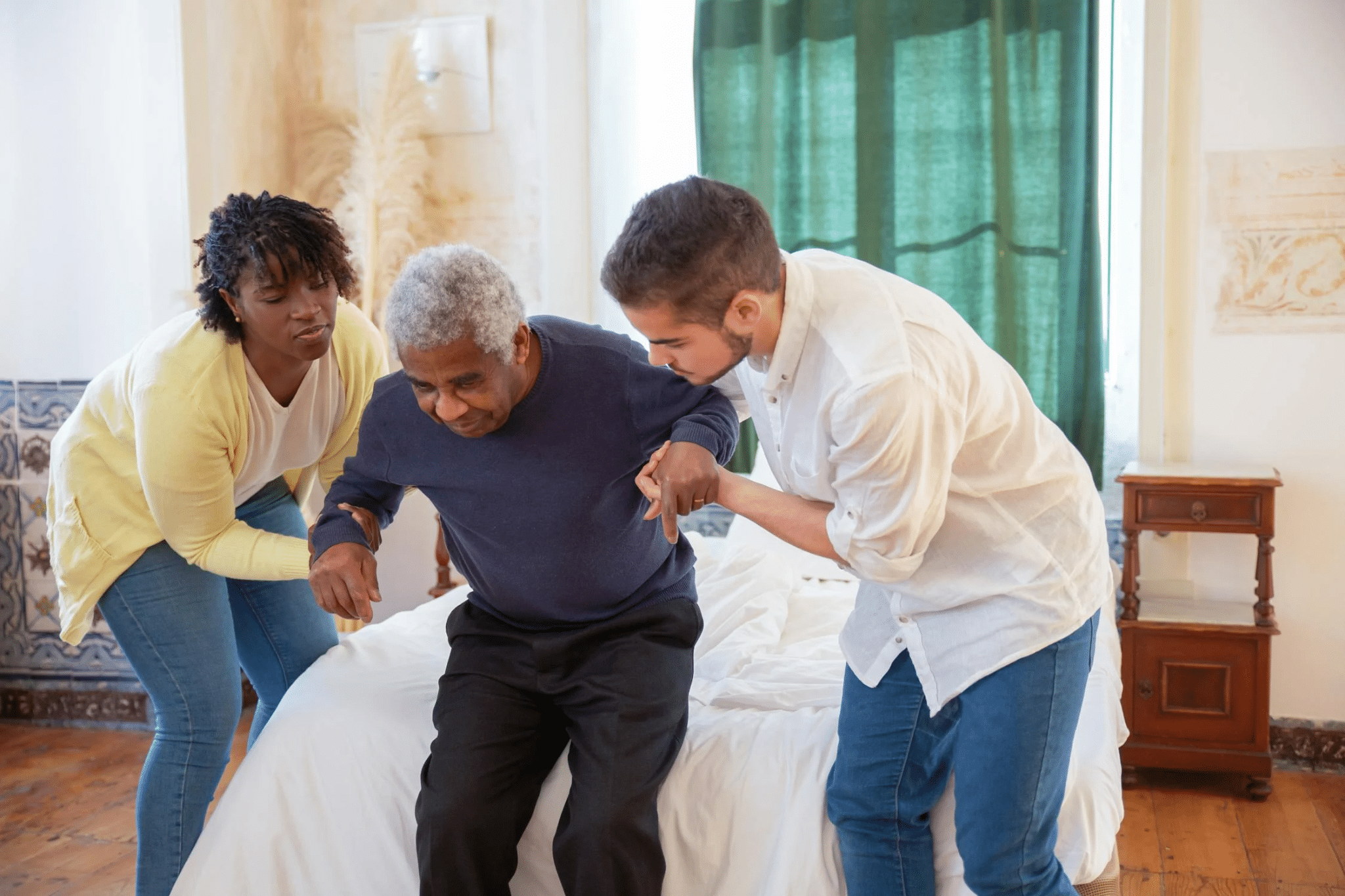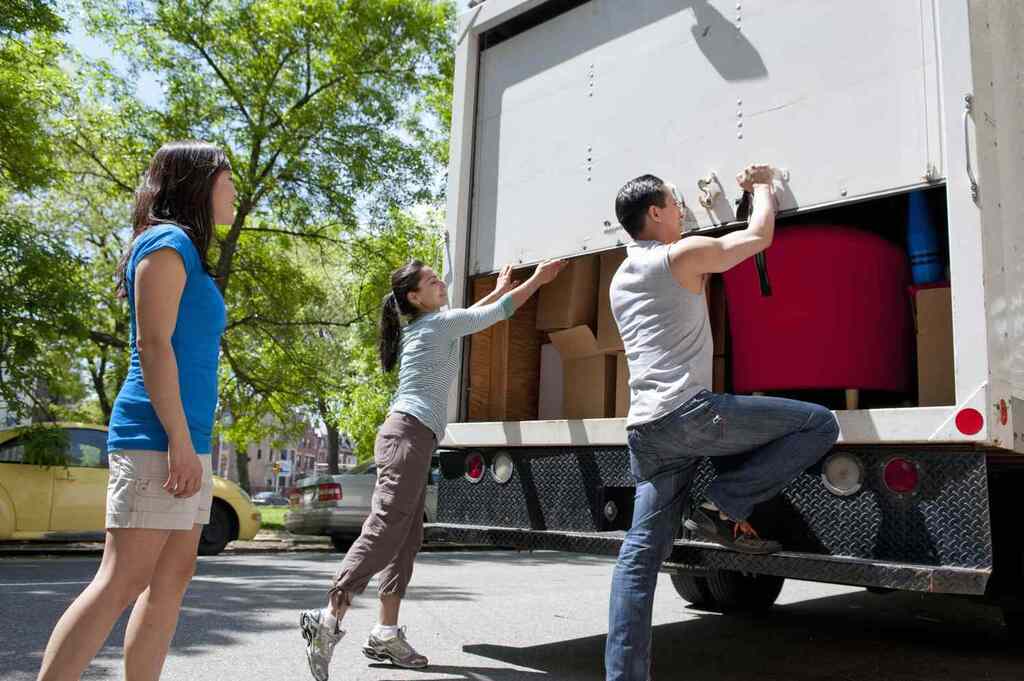Ensuring Elderly Safety at Home: A Room-by-Room Checklist
Aging comes with its own set of challenges, but worrying about home safety shouldn’t be one of them.
For family caregivers, making sure your elderly loved ones are safe at home is likely a top priority. Believe it or not, the majority of accidents among seniors happen right where they should feel most secure – their own homes.
According to the National Council on Aging, falls are the leading cause of fatal and non-fatal injuries for older Americans. But don’t worry. You can make your home a fortress of safety with some thoughtful adjustments and prevent mishaps before they happen.
In this post, we’ll walk you through room-by-room safety measures to keep your elderly loved ones safe and sound. Let’s get started!
Why Home Safety for the Elderly Matters
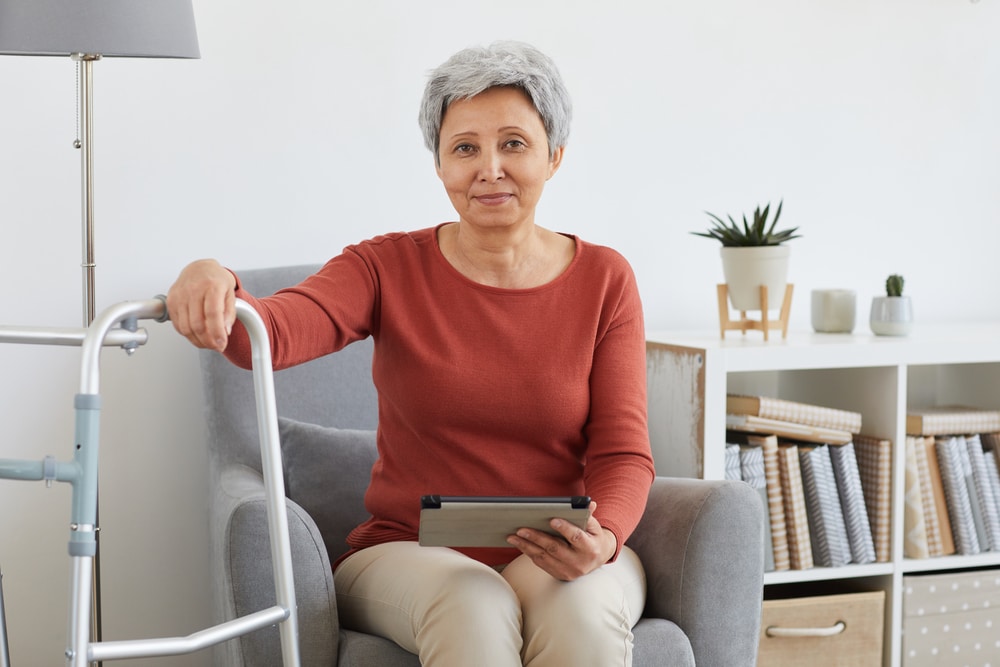
Imagine navigating your home with limited mobility or impaired vision. Suddenly, everyday objects become potential hazards. For seniors, these risks are all too real.
Improving home safety isn’t just about preventing accidents – it’s about providing peace of mind—for both you and your elderly loved ones.
Creating a safe environment means fewer trips to the emergency room and more time enjoying life. Plus, a well-organized and hazard-free home can contribute to emotional well-being and independence. Ready to make your home a safer place? Let’s take it room by room.
Living Room Safety Tips
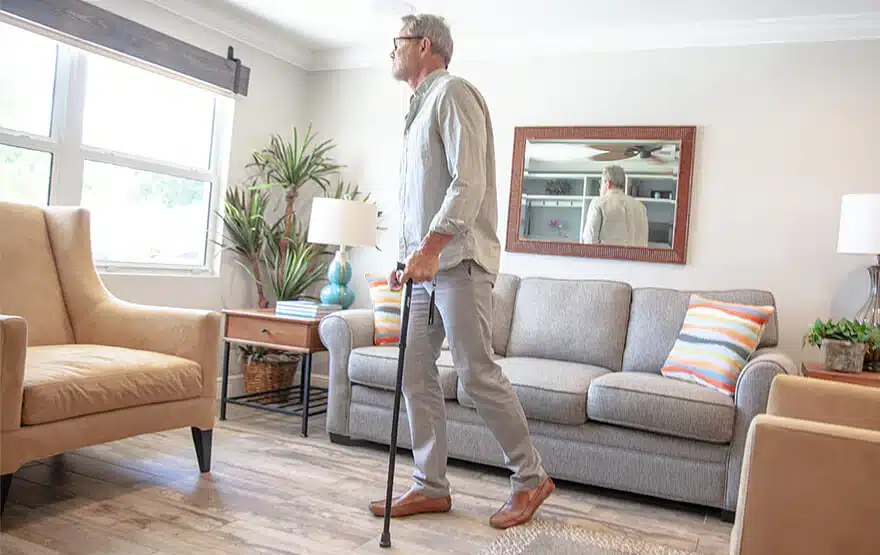
Let’s start in the living room – likely, one of the most-used areas of the home.
Clear and Spacious Pathways
Ever tripped over a stray cord or stubbed your toe on a coffee table? Now imagine doing that with a walker or cane. Make sure the furniture is arranged to create clear pathways. Aim for wide spaces that allow for easy maneuvering and remove any unnecessary furniture that clutters the room.
Secure Electrical Cords
Loose cords are tripping hazards waiting to happen. Use cable organizers or cord covers to keep them out of the way. Better yet, secure them along baseboards where they’re less likely to be stepped on.
Stable, Comfortable Furniture
Opt for furniture that’s stable and comes with armrests. Armrests provide support when sitting down or standing up – a critical factor for those with limited mobility. Make sure chairs and sofas are firm enough to make getting up easier.
Adequate Lighting
Good lighting is essential, especially as eyesight dims with age. Make sure the living room is well-lit, and consider adding nightlights for evening hours. Motion-sensor lights are a fantastic option – they turn on automatically, reducing the risk of falls in the dark.
Kitchen Safety Tips
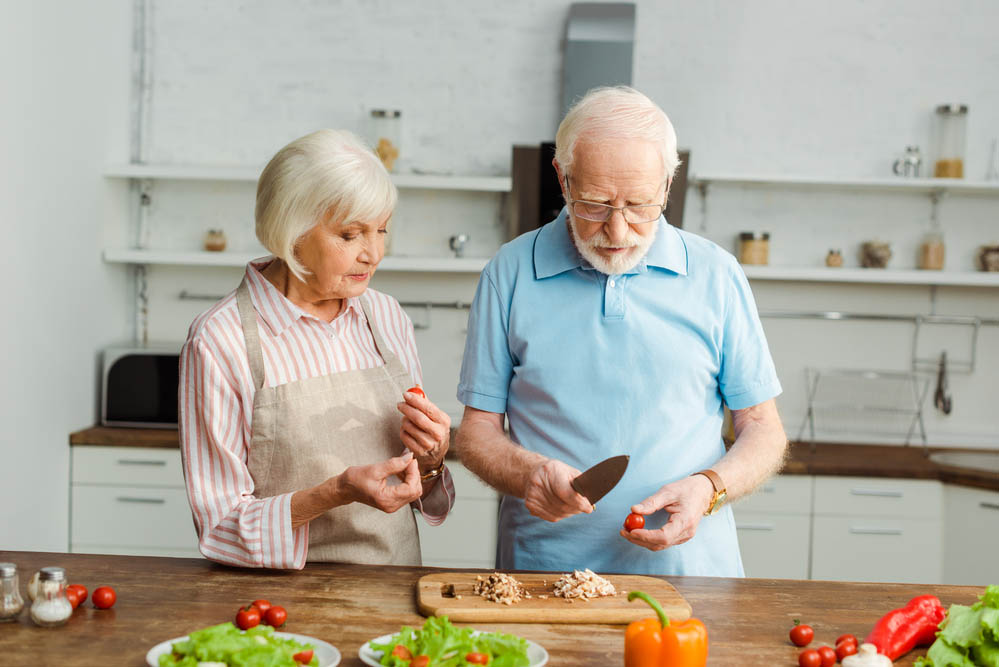
Moving on to the kitchen, here are a few more tips:
Organize for Accessibility
Store frequently used items within easy reach to eliminate the need for step stools. Keep heavy pots and pans on lower shelves.
These might sound like minor adjustments, but these simple changes can make a world of difference in preventing falls and strains.
Automatic Shut-off Devices
Stove and oven accidents are common among seniors. Installing automatic shut-off devices can prevent fires and burns. These gadgets turn off the stove after a set period, guaranteeing their safety even if your loved one forgets.
Non-slip Mats
Place non-slip mats near the sink and stove. Kitchens can be slippery, especially when dealing with water and oil. Non-slip mats provide that extra grip to prevent falls.
Clear Labeling
Label items clearly with large-print labels if necessary. This is especially helpful for those with vision impairments. Knowing exactly where everything is reduces confusion and makes cooking a less daunting task.
Bathroom Safety Tips
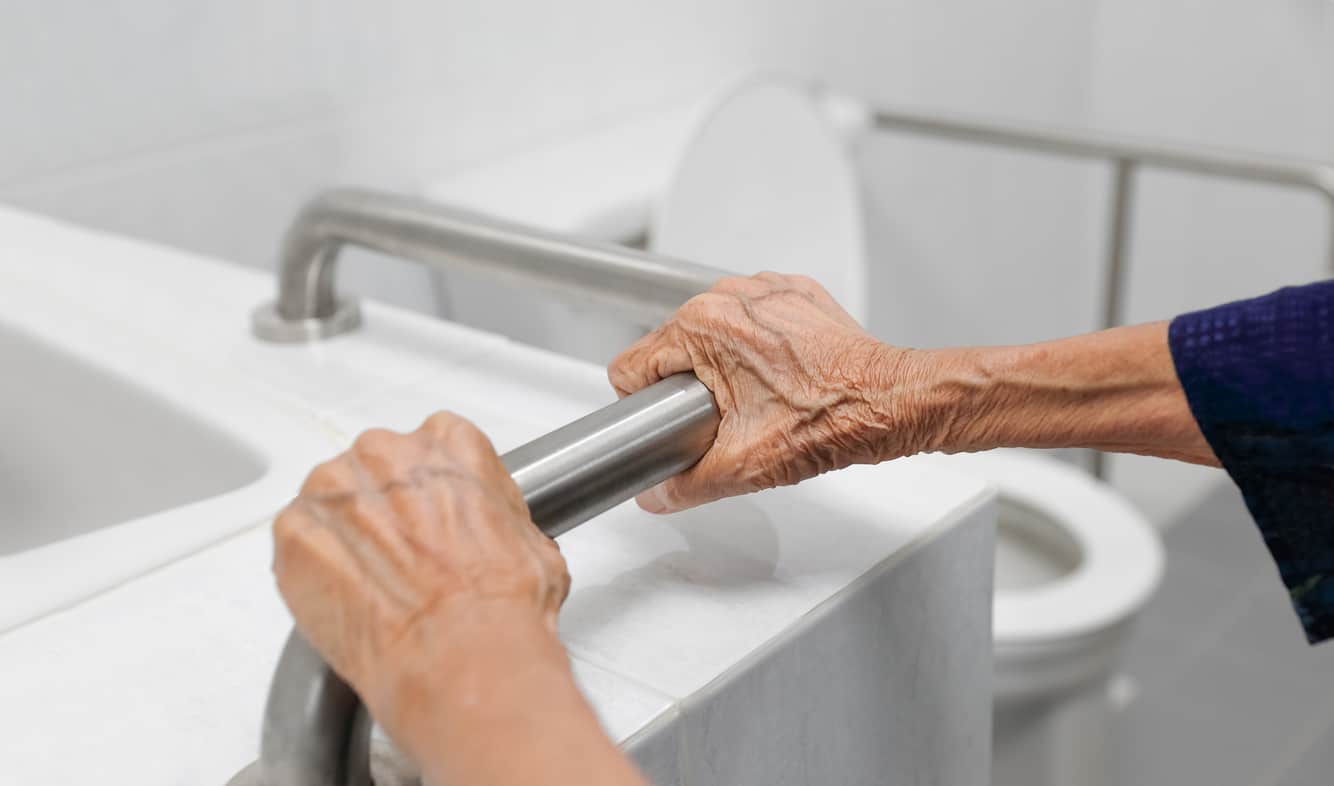
Here are some tips for the bathroom.
Install Grab Bars
Grab bars near the toilet and in the shower or bathtub are lifesavers – literally. They provide support and stability, helping prevent slips and falls. Make sure the bars are securely attached and can bear weight.
Shower Chair and Handheld Showerhead
A shower chair offers a safe seating option while bathing. Pair it with a handheld showerhead for added convenience. These two items make showers less risky and more comfortable.
Non-slip Decals
Apply non-slip decals to the bathtub floor. They provide extra grip and reduce the risk of slipping. These decals are easy to apply and come in various designs, making them both functional and stylish.
Easy Access to Toiletries
Make sure toiletries and medications are within easy reach. Using a shower caddy or shelf can keep things organized and accessible. This minimizes the need for bending or stretching, which can be precarious.
Bedroom Safety Tips
What should you be concerned about in the bedroom? Here are a few tips.
Comfortable Bed Height
The bed should be at a comfortable height for easy access. Too high, and it becomes a struggle to climb in; too low, and standing up is a challenge. Aim for a bed height that allows for easy sitting and standing.
Phone and Flashlight Within Reach
Keep a phone and flashlight within arm’s reach of the bed. In case of emergencies, having these items handy can make all the difference. A bedside table or wall-mounted holder can keep them accessible.
Well-lit Pathways
Ensure pathways to the bathroom are well-lit. Nightlights and motion-sensor lights can guide the way without the need to fumble for a light switch. This reduces the risk of falls during late-night bathroom trips.
Stairs and Hallways Safety Tips
While these might not be rooms, technically, stairways and hallways can be just as risky. Keep these pointers in mind:
Handrails on Both Sides
Install handrails on both sides of staircases. This provides extra support and stability. Make sure the handrails are sturdy and at a comfortable height for easy gripping.
Adequate Lighting
Well-lit stairways and hallways are essential. Poor lighting can obscure steps and increase the risk of falls. Consider installing additional light fixtures or using brighter bulbs to enhance visibility.
Contrasting Colors on Steps
Use contrasting colors on steps to improve visibility. This helps distinguish each step, making it easier to see where one ends and the next begins. Non-slip treads can also provide extra grip and prevent slips.
Stairlift Installation
For those with severe mobility issues, a stairlift or home elevator can be a game-changer. It provides a safe and effortless way to navigate between floors. While it’s an investment, the added safety and convenience can be well worth it.
Outdoor Areas Safety Tips
Outside, here’s what you should do:
Even Walkways and Driveways
Make sure the walkways and driveways are even and free of hazards. Cracks and uneven surfaces can lead to trips and falls. Regular maintenance can keep these areas safe and accessible.
Adequate Outdoor Lighting
Install adequate outdoor lighting to illuminate pathways, steps, and entryways. Motion-sensor lights are especially useful, providing illumination only when needed and conserving energy.
Non-Slip Surfaces
Use non-slip surfaces for steps and ramps. Materials like textured concrete or non-slip paint can provide the necessary grip to prevent falls, even in wet conditions.
Secured Gates and Fences
Make sure gates and fences are secure. This not only keeps the property safe but also provides peace of mind. Regularly check for any wear and tear and repair as needed.
A Safe Haven Awaits
Transforming your home into a safe haven for your elderly loved ones is a rewarding task.
By addressing potential hazards room by room, you can significantly reduce the risk of accidents and create a comfortable living environment. From securing electrical cords in the living room to installing grab bars in the bathroom, each step you take contributes to their well-being.
But home safety isn’t a one-time effort. Regularly review and update safety features to adapt to changing needs. Stay proactive and stay involved.
Most importantly, start today – because peace of mind is priceless!

